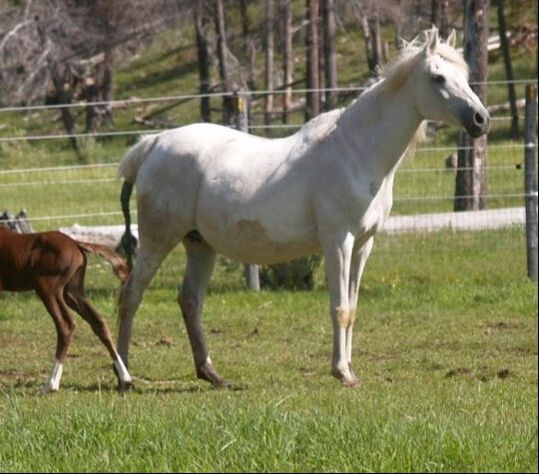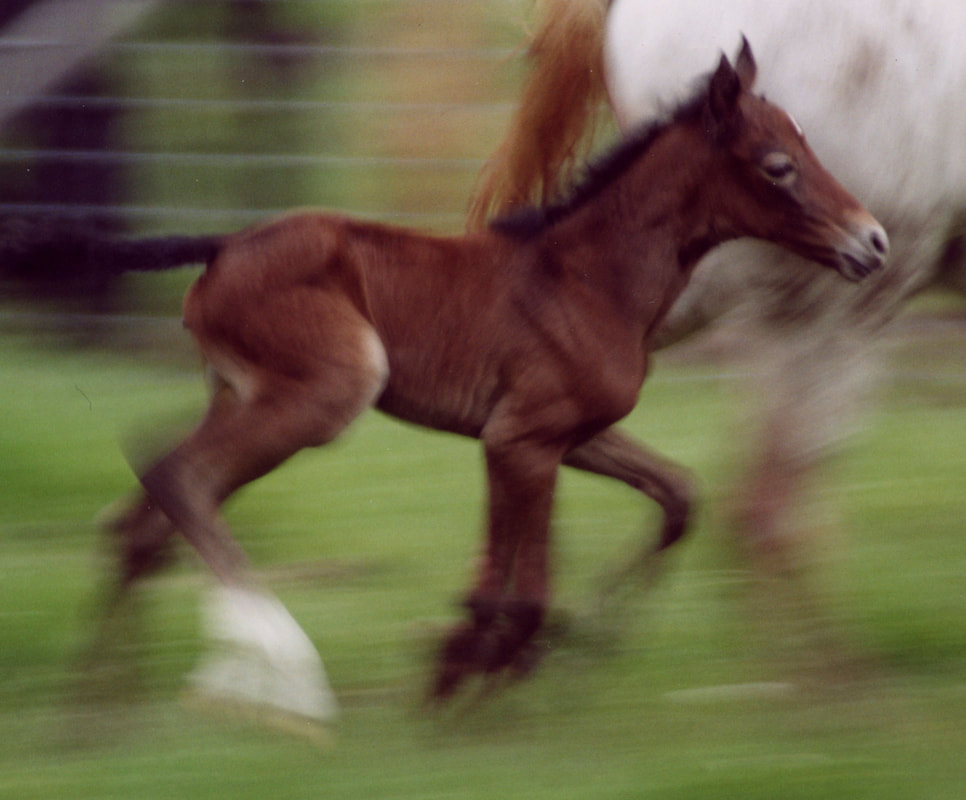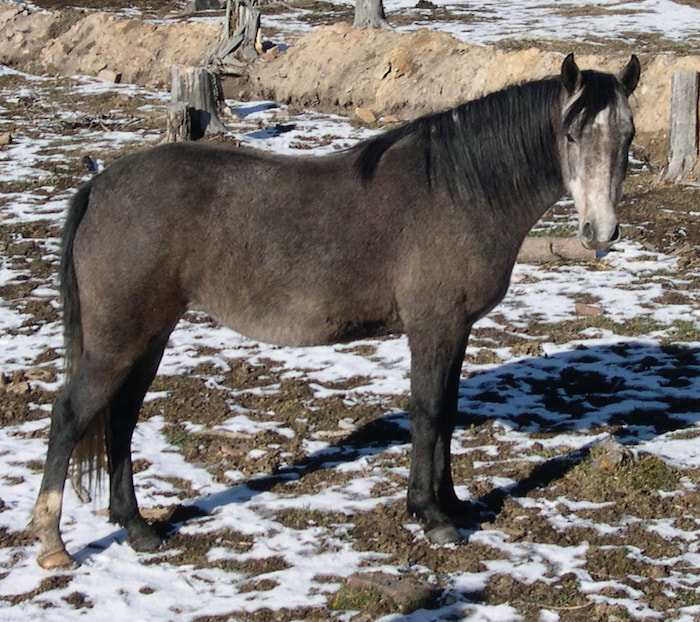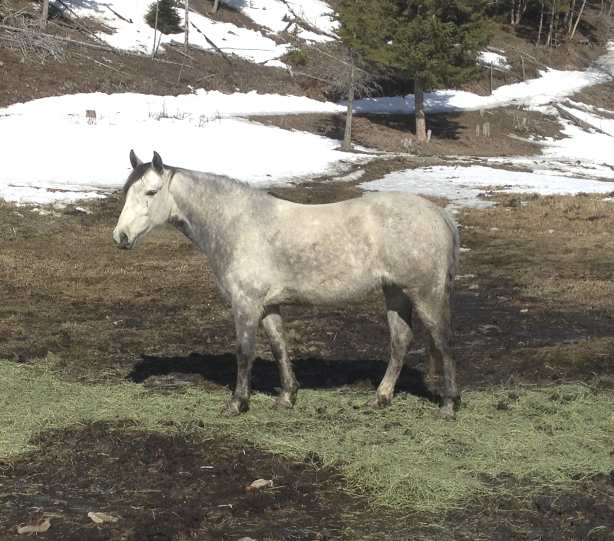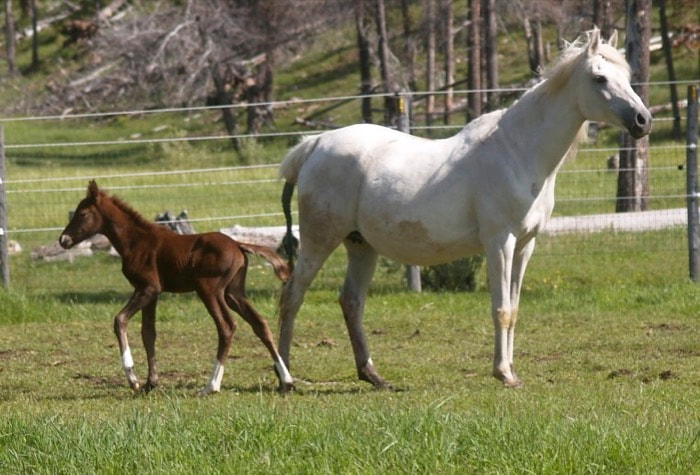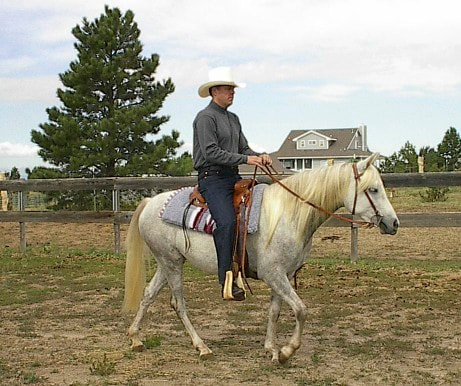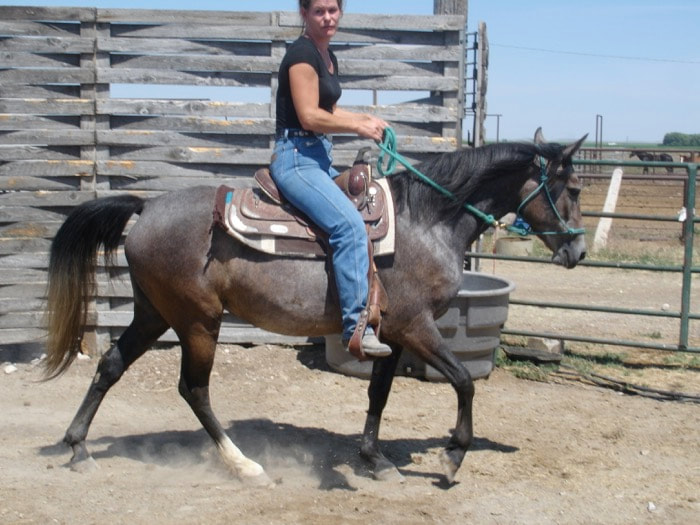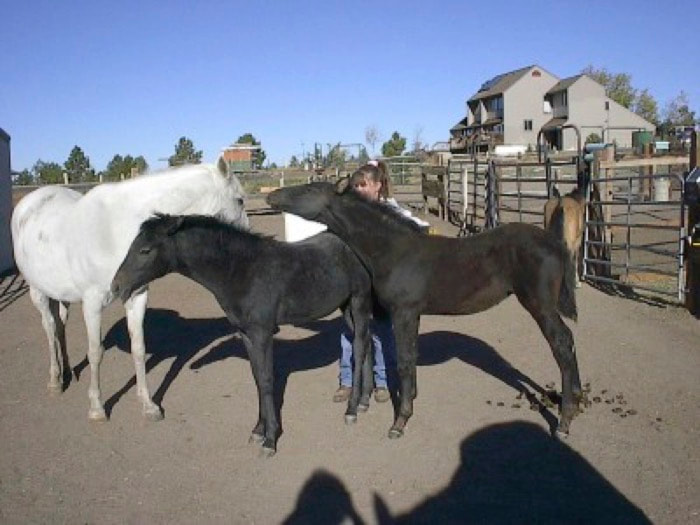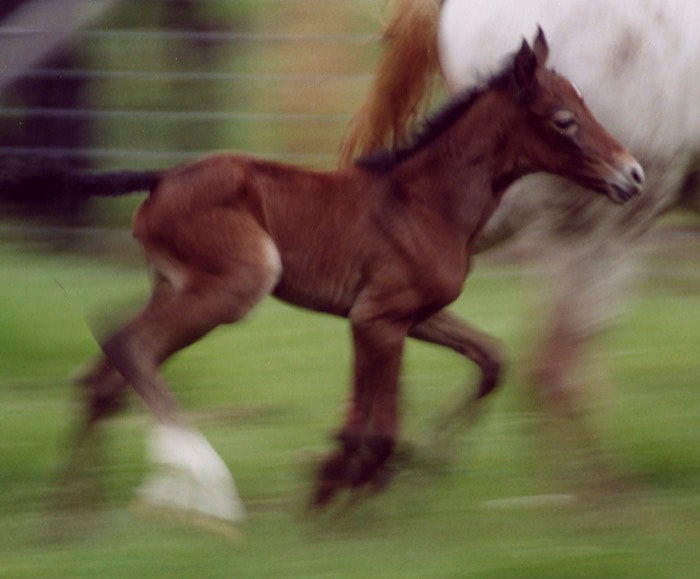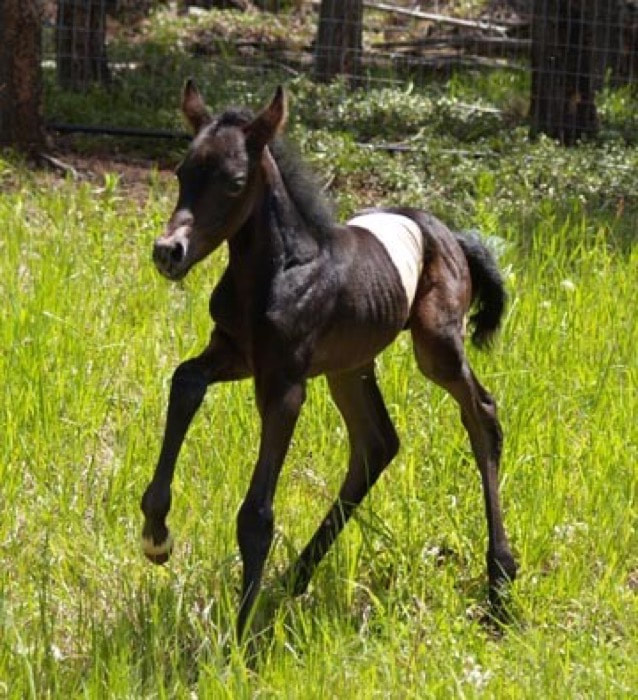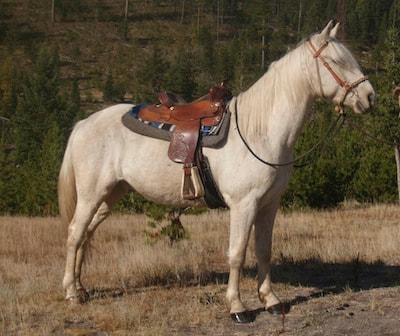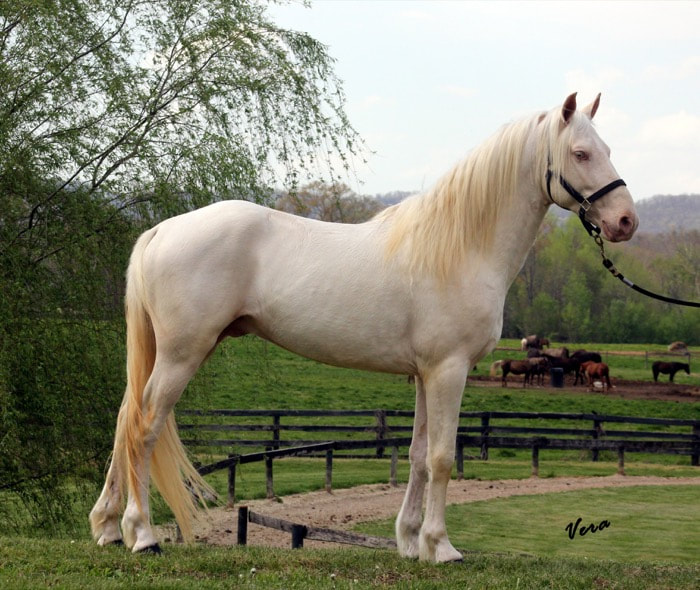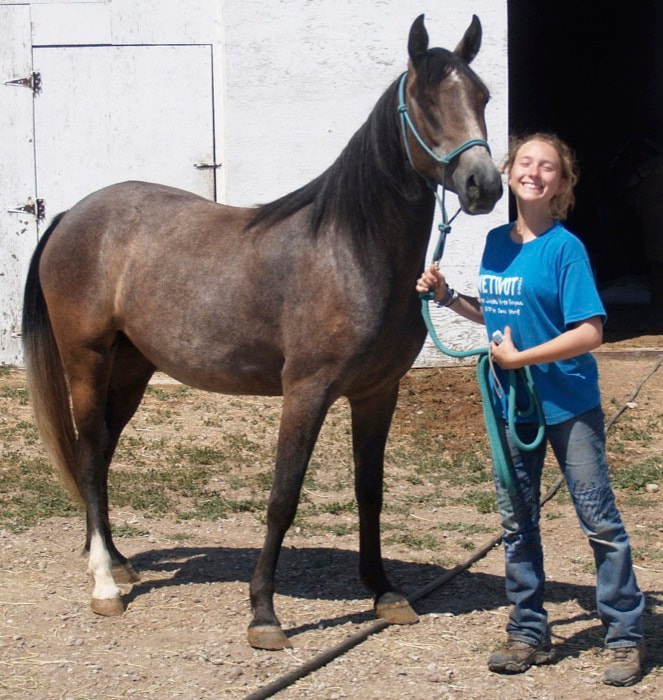horse Colors: Gray
|
Gray Horses
Most horse that we think of as white are technically Gray horses. We call a horse Gray when it has the most common of the white color gene (the Gray gene) turned ON. These horses are born a non-white color (could be any other color at all) and gradually turn white over the course of their lives. This process of turning white can happen quickly so that the horse is pure white by the time it is only a few years old, or so slowly that it never reaches pure white and spends most of its life as an in-between gray color. It is even possible, though very rare, for a horse to turn so early (in utero) that it is mostly white by the time it is born. |
|
Genetics: the Gray gene is a simple ON/OFF switch with the ON version being dominant. The horse may be any base color, as well as any other Special Color. One or both of its Gray genes will be turned ON.
|
Description: Gray horses will be born some other color and begin to change as early as a few months of age. The in-between Gray stages, from which the color gets its name, can be quite striking, but all horses will eventually turn pure white if they live long enough. A horse of this color has dark skin underneath its hairs (rather than pink) and this can be seen around the mouth and nose.
STAGES OF COLOR IN A GRAY HORSE:
Every gray horse changes color at a different rate, some becoming pure white at a very young age and some remaining some medium form of gray most of their lives. Here is an example of a Gray filly we raised and her coloring stages during the first five years of her life.
Every gray horse changes color at a different rate, some becoming pure white at a very young age and some remaining some medium form of gray most of their lives. Here is an example of a Gray filly we raised and her coloring stages during the first five years of her life.
And here are some more examples of Gray horses...
Foal Colors
Gray horses are rarely identifiable as gray at birth. They usually don't start to "gray out" until later in life, though the filly in the middle bellow was already speckled by the time she was six months old.
Gray horses are rarely identifiable as gray at birth. They usually don't start to "gray out" until later in life, though the filly in the middle bellow was already speckled by the time she was six months old.
Other Color Genes Mixed With Gray
Any other color can be mixed with the Gray gene. In this case, whatever other color the horse would have been without the gray gene is what the horse is born looking like. This color then will slowly fade (at a different rate in each horse) into an in-between gray color and eventually into pure white.
Any other color can be mixed with the Gray gene. In this case, whatever other color the horse would have been without the gray gene is what the horse is born looking like. This color then will slowly fade (at a different rate in each horse) into an in-between gray color and eventually into pure white.
Other Colors Easily Mistaken for Gray
Roan can easily be mistaken for gray at some stages, as well as some of the other whites such as cremello, perlino or a very light palomino.
Roan can easily be mistaken for gray at some stages, as well as some of the other whites such as cremello, perlino or a very light palomino.
|
Palomino - A very light palomino can easily be mistaken for Gray.
|
|
Cremello or Perlino - These horses are often mixed up with Gray. The way to tell the difference is by what color their underlying skin is. Look at the skin around the horse's nose, for instance. Is it dark or pink? Only the cream-gene horses (Cremello or Perlino) will have pink skin under its white hair.
|
|
Roan - Gray horses in their beginning stages of changing can look like Roan horses somewhat. Both involve flecked white hairs imposed over another color. For instance, look at the picture of the horse on the right - this is a gray horse NOT a roan horse.
|
